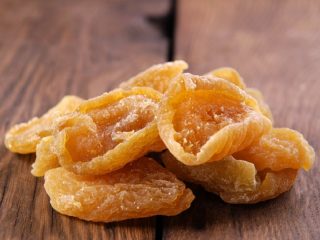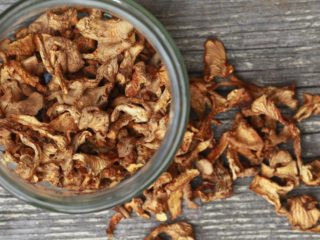Content
Not only traditional healers, but also ordinary gardeners and even chefs can harvest thyme. The scope of application of the plant is very wide, but the beneficial properties of the crop can only be assessed if it is handled correctly.
The popularity of thyme is associated with its properties and diverse biochemical composition, which successfully combines various vitamins, tannins, oleic and ursolic acids.
Properties of thyme:
- Providing a bronchodilator effect, facilitating expectoration of sputum;
- help with stomatitis, gingivitis and other inflammatory diseases of the oral cavity;
- antiseptic and anti-inflammatory effect in diseases of the respiratory system;
- treatment of purulent wounds, ulcers and abscesses, acne;
- improving appetite and stimulating metabolism;
- normalization of prostate function;
- analgesic effect for migraines and headaches.
In combination with other herbs, tea made from prepared thyme helps with neuritis and sciatica, gastritis and gastrointestinal disorders.It is known that thyme has a beneficial effect on the nervous system, reducing the negative effects of stress.
The dried plant can be brewed as tea, added to other herbal mixtures, and used as a seasoning in cooking.
When to collect thyme herb for drying for the winter
Only above-ground parts should be harvested: leaf blades, stems or buds. You cannot collect thyme roots for tea or medicinal tinctures.

The main places where thyme grows are forest edges, clearings and slopes, as well as parks where it is grown as an ornamental perennial.
The time for collecting thyme depends on the climatic conditions of the region. In the Rostov region, you can start harvesting in the last weeks of June or early July. In Crimea, thyme blooms throughout the summer months, including September. In central Russia, the collection period is from June to September.
It should be taken into account that thyme should be harvested for culinary purposes before flowering begins. It is during this period that the plant has the maximum concentration of essential oils, which give dishes a specific taste and aroma.
Harvesting thyme for medicinal purposes should occur during the flowering period. In ancient times, herbalists preferred to carry out this procedure on Trinity or the Dormition of the Blessed Virgin Mary. It is generally accepted that if you prepare thyme in time, it will contain much more useful substances.
How to properly collect thyme
To distinguish a plant, you need to study it. Thyme looks like a climbing subshrub, reaching 35-45 cm in height; its stems are branched, and the trunk is woody, very strong. The leaf blades are small, attached to the shoots in pairs. The buds of the plant are purple in color, collected in paniculate inflorescences.They have a characteristic, bitter-spicy smell.

It is best to harvest thyme in places located away from industrial enterprises and highways.
All work should be planned in dry and warm weather. It is recommended to cut thyme for drying for the winter in the morning, as soon as the dew disappears.
Algorithm of actions:
- Prepare containers and tools: scissors or knife, basket or plastic container.
- Carefully cut off the leaves and stems so as not to cause significant damage to the thyme. It is best to work from different sides of the bush. It is forbidden to cut off shoots, as there is a high risk of injury to the root system.
- It is allowed to cut off no more than five branches from one stem. This restriction allows the subshrub to continue growing next year.
If you plan to prepare large quantities of thyme for tea in the winter, then it is best to divide the procedure over several days: if you cut a lot of thyme at once, there is a risk of drying it incorrectly, which means spoiling the final product.

You need to fold the branches carefully to make working with them easier in the future.
Do I need to wash thyme before drying?
If you harvest thyme in compliance with the rules, then additional processing of raw materials is not required. It is enough to shake off the dust well and inspect it. Damaged leaves, branches, insects and debris need to be removed.
If the plant is very dirty, just rinse it with water. Gardeners use a trick: 1-2 days before harvesting the thyme, they water the bush well from above to remove dust and dirt.
How to dry thyme for the winter at home
The choice of method is at the discretion of the plant owner. It should be taken into account that after collection it is necessary to immediately begin further processing of the harvested raw materials.
On air
One of the most labor-intensive but safest methods of drying thyme for tea. Harvested shoots along with leaves are processed. They must be carefully laid out on a baking sheet, previously covered with paper or thick cloth.
After preparing the raw material, it must be transferred indoors. It should be darkened, but with an influx of fresh air. It should be borne in mind that direct sunlight will deprive the prepared raw materials of some useful substances. For this purpose, you can use glazed and curtained verandas. Herbalists used to prefer to place the plant in the attic. There they tied the brooms and hung them from the beams. And to prevent dirt from sticking to the harvested grass, it was wrapped in cotton cloth or gauze.
To properly dry thyme, you need to turn it over several times daily to prevent the plant from rotting.

To protect thyme preparations from dust, the shoots should be covered with gauze.
To protect the harvested thyme from dust, it can be placed in portions in mesh bags. They need to be hung along the walls. Drying time is 3-5 days and varies greatly depending on the weather. In dry and hot weather, raw materials are prepared many times faster.
In an electric dryer
You can also dry thyme for tea using special devices. The electric dryer is easy to use; you just need to adhere to the temperature regime: do not set the device to more than 35 °C.
It is best to dry the harvested shoots on the upper racks. This is due to the fact that the temperature on the lower trays may be higher.

The drying time for thyme in an electric dryer is 6-8 hours.
In the oven
It is strictly not recommended to use a gas or electric stove. This is due to the fact that such devices are difficult to adjust to the exact temperature, so there is a high risk of spoiling the harvested thyme.
If there is no choice, then the plant must be laid out on a baking sheet and placed in the oven. Set the temperature on the device to no higher than 35 °C and leave to dry for 5-6 hours with the door ajar. It is necessary to regularly turn the harvested shoots over and monitor their fermentation.
How to determine the readiness of thyme
Regardless of the method, you should focus not on time, but on the appearance of the plant. The harvested thyme should become elastic and very brittle after drying. The leaves darken, crumble easily, and separate from the stem when pressed.
How and where to store thyme
To preserve thyme in winter, you need to pack it properly. After the raw materials have dried, sort them out to make sure they are fully prepared.
It is recommended to store harvested thyme in fabric bags, cardboard boxes or paper bags. Do not pack the thyme tightly into the container. If necessary, shoots and leaves can be chopped by hand.
The temperature in the room where the harvested thyme will be stored should not exceed +20 °C.The room should be darkened and ventilated regularly. If storage conditions were violated or moisture appeared on the raw materials, then the prepared product must be poured onto paper and dried again. If the thyme becomes moldy, it cannot be used. Such grass must be disposed of.

The shelf life of properly dried thyme is 24 months.
Before choosing a container, you should decide on the method of processing the harvested raw materials. The least expensive option is to hang clumps of grass indoors. The room should be warm and dry, without access to sunlight. If necessary, just break off a few prepared branches and chop them.
To save space, most people prefer to chop their thyme. To do this, just rub the stems in your palms. It is recommended to remove rough branches.
In cooking, cooks grind dried thyme to a powder. For this purpose, you should use a blender or coffee grinder.
Conclusion
Anyone can harvest thyme. To obtain maximum benefit from the plant, you should adhere to a number of rules for collecting, drying and storing raw materials. The finished product can be used for a variety of purposes: for treatment, in cooking as a seasoning.








